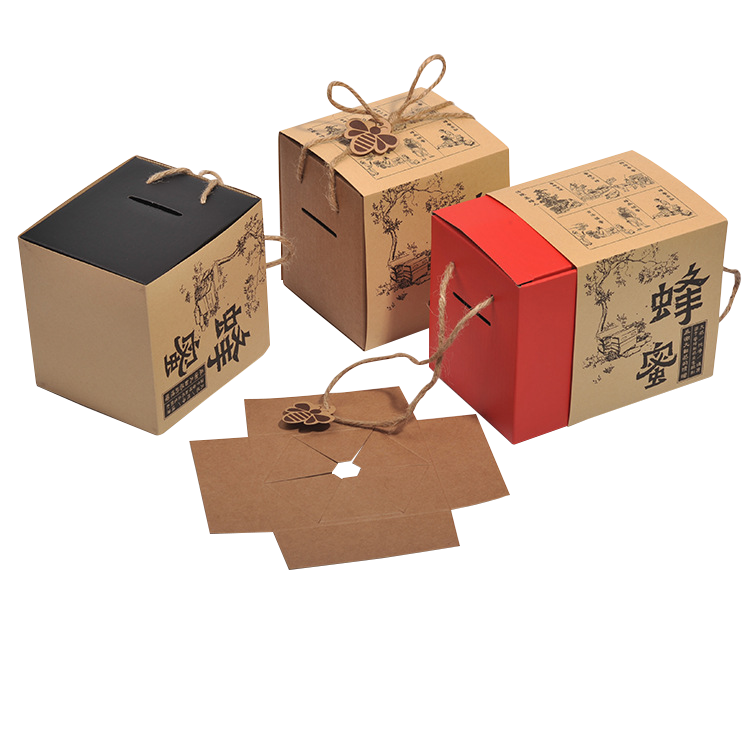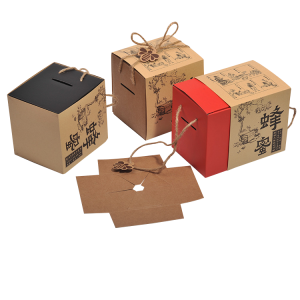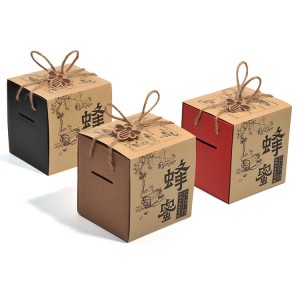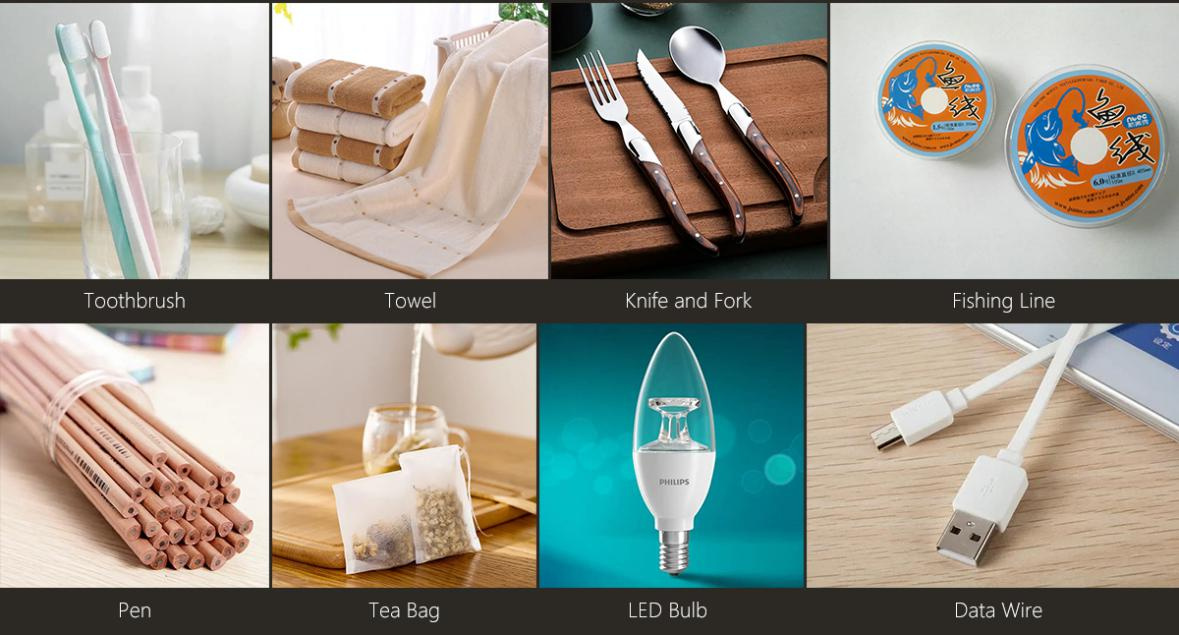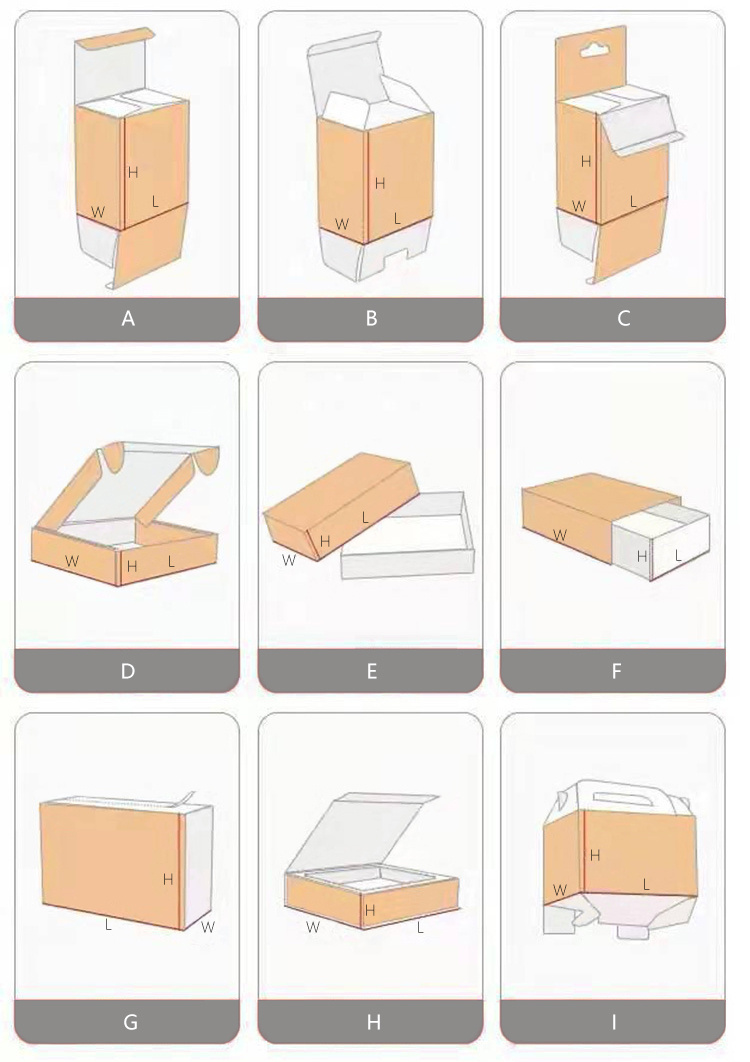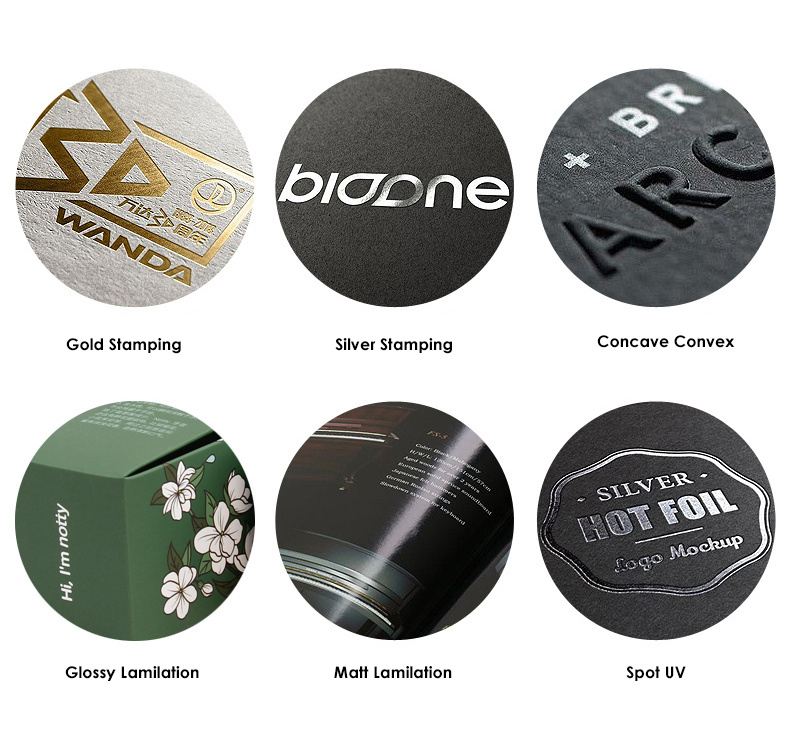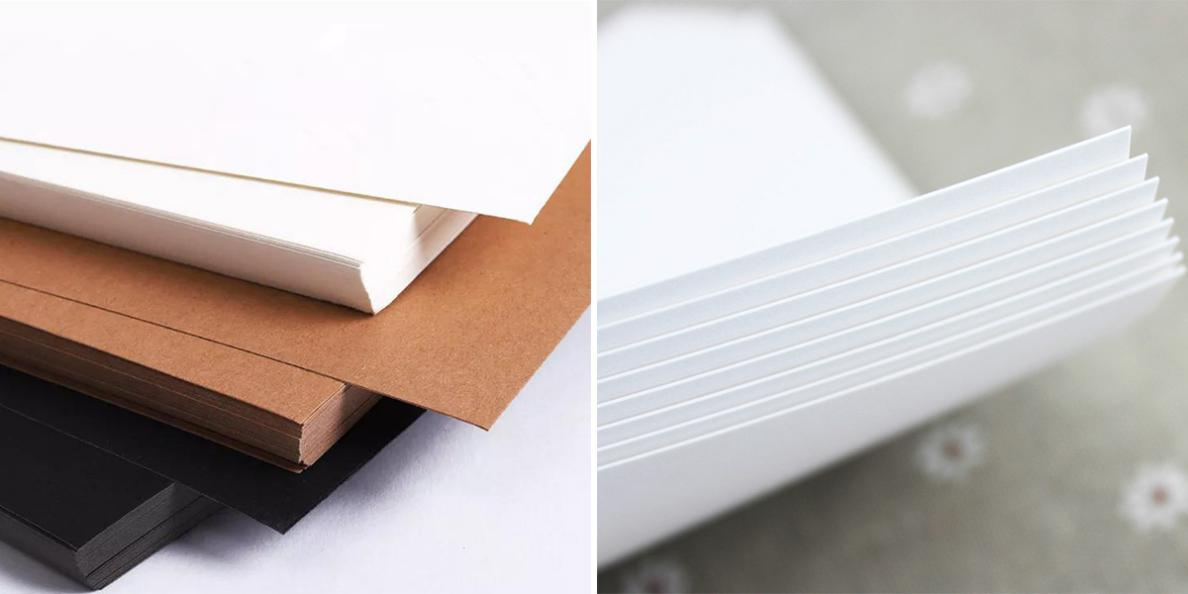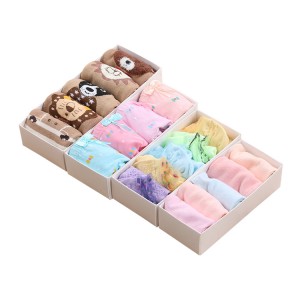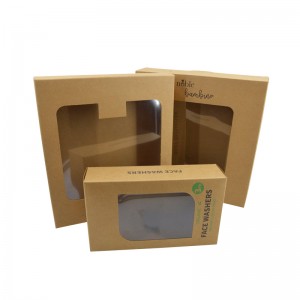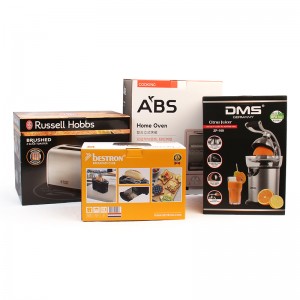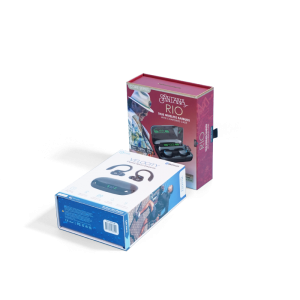Small Corrugated Paper Box Honey Packaging Box With Decor And Sleeve
Description
This is a honey packaging box, with inner tray, outer sleeve and decor. Box dimensions depends on size of your honey bottle. The black or red of main box is printing color, it’s customized.
Basic Info.
| Product Name | Honey packaging | Surface Treatment | No need. |
| Box Style | Product box with sleeve | Logo Printing | Customized Logo |
| Material Structure | 3 layers corrugated board & kraft paper | Origin | Ningbo city, China |
| Weight | 32ECT, lightweight | Sample type | Printing sample, or no print. |
| Shape | Rectangle | Sample Lead Time | 2-5 working days |
| Color | CMYK Color, Pantone Color | Production Lead Time | 12-15 natural days |
| Printing mode | Offset Printing | Transport Package | Standard export carton |
| Type | One Side Printing Box | MOQ | 2,000PCS |
Detailed Images
These details are used to show the quality, such as materials, printing and surface treatment.
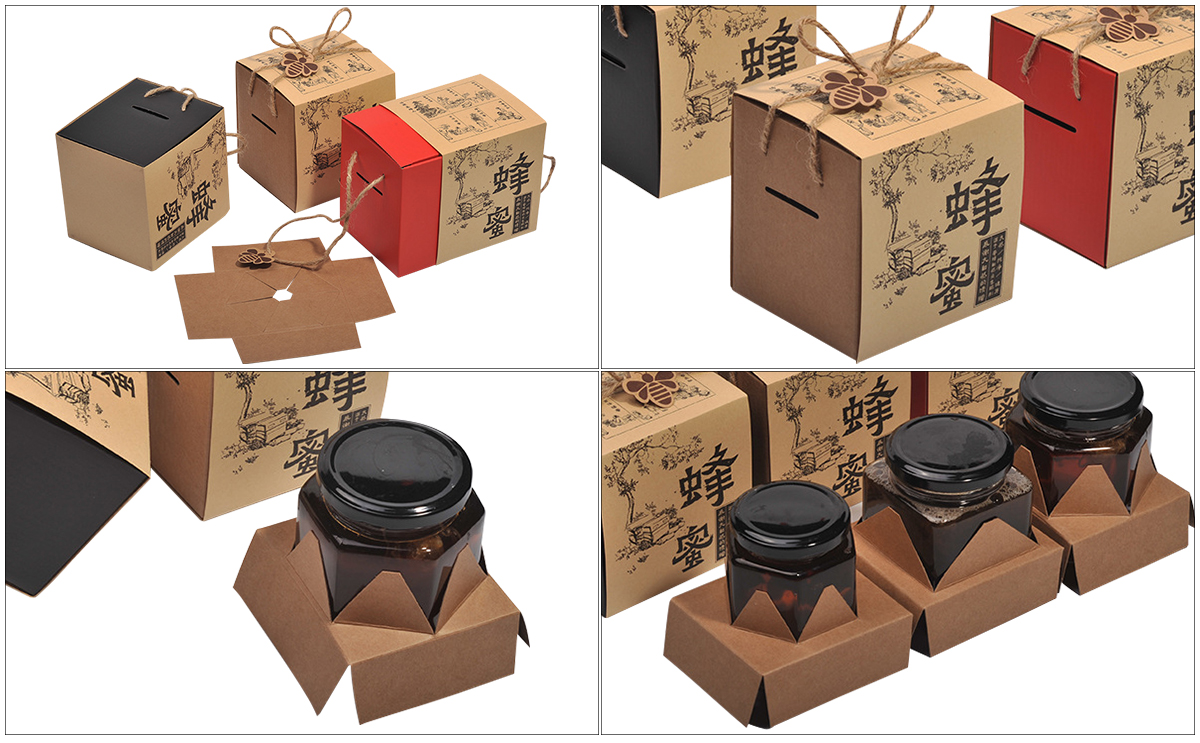
Material Structure and Application
Corrugated paperboard can be divided into 3 layers, 5 layers and 7 layers according to the combined structure.
The thicker “A Flute” corrugated box has better compressive strength than "B Flute" and "C Flute".
“B Flute” corrugated box are suitable for packing heavy and hard goods, and are mostly used for packing canned and bottled goods. "C Flute" performance is close to "A Flute". "E Flute" has the highest compression resistance, but its shock absorption capacity is slightly poor.
Corrugated Paperboard Structure Diagram
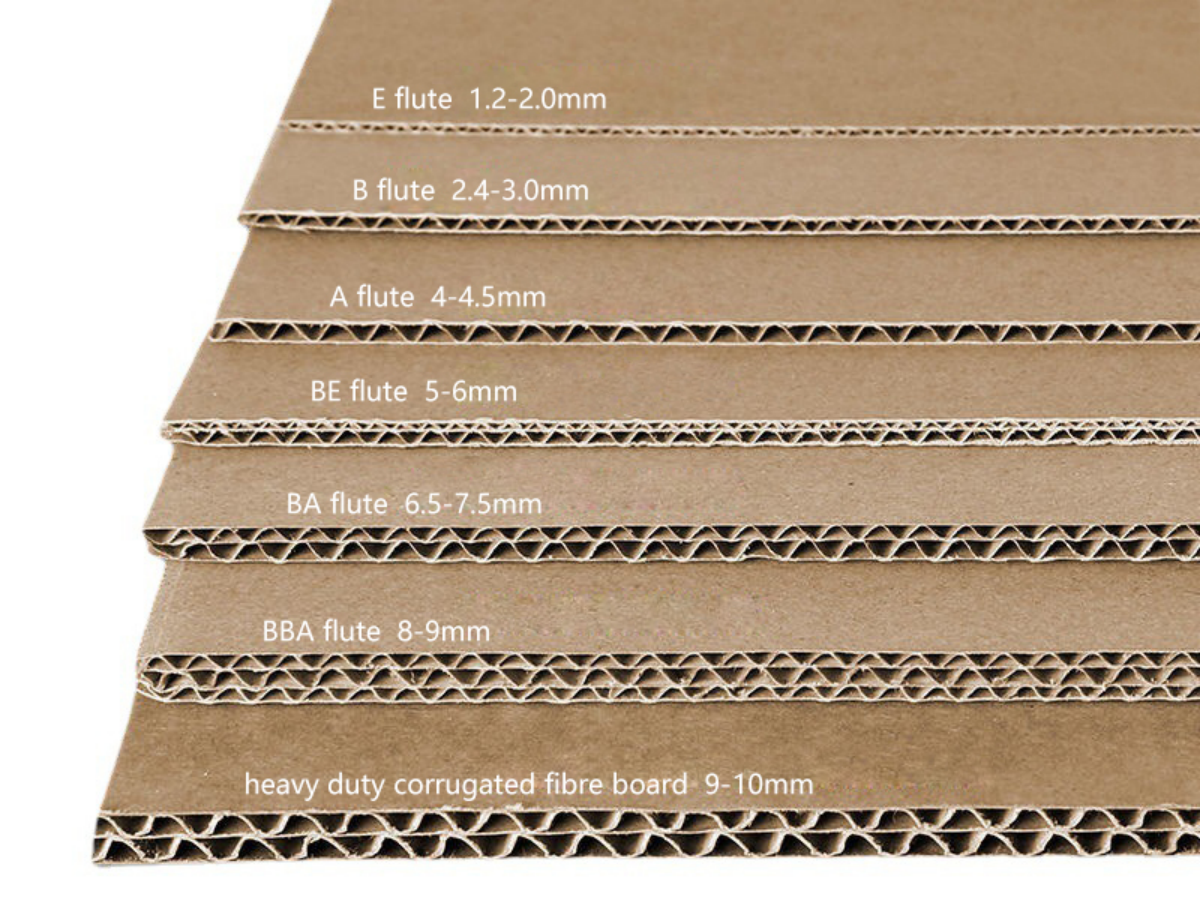
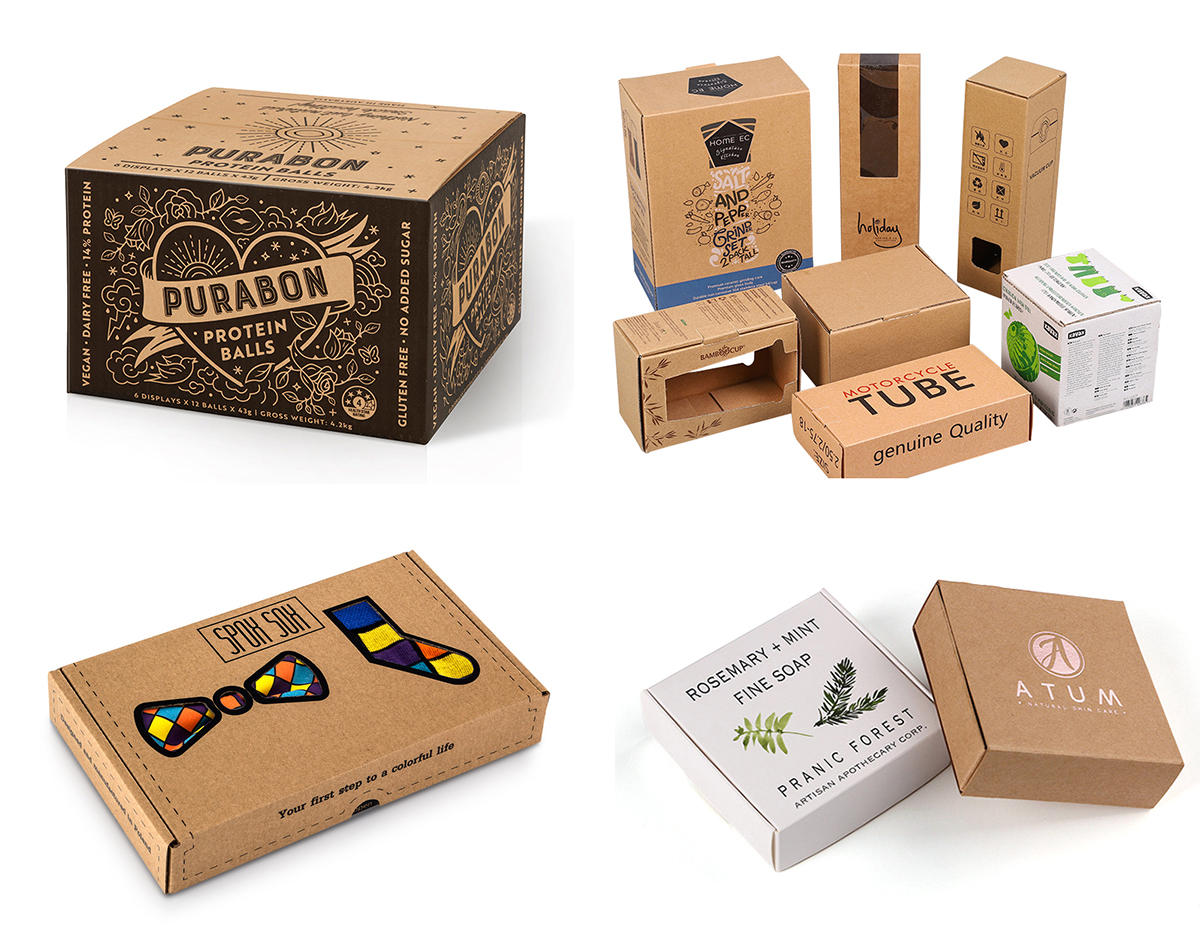
Box Type and Surface Treatment
These box type are used for reference, it can be customized as well.
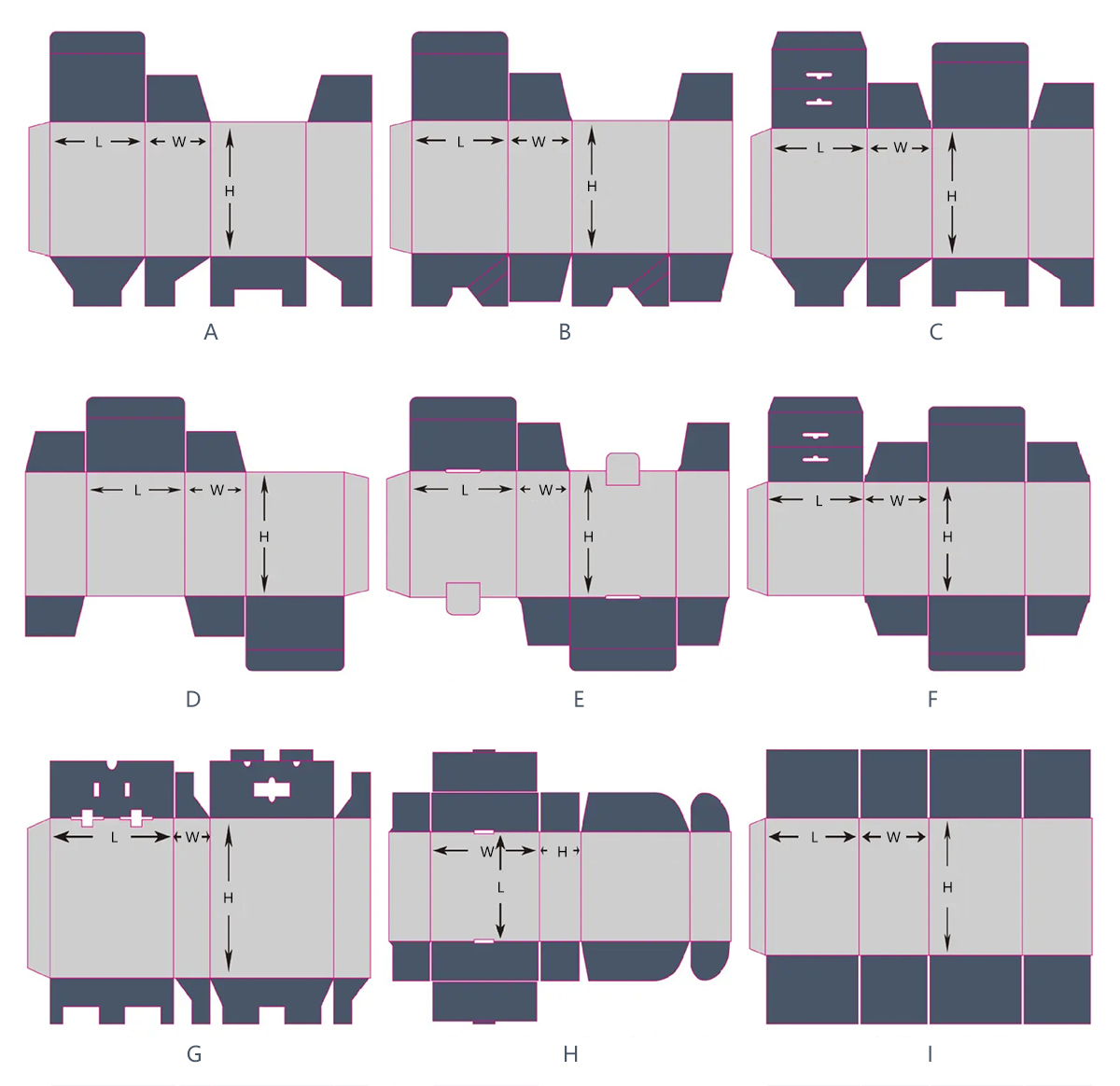
Common Surface Treatment As Follows
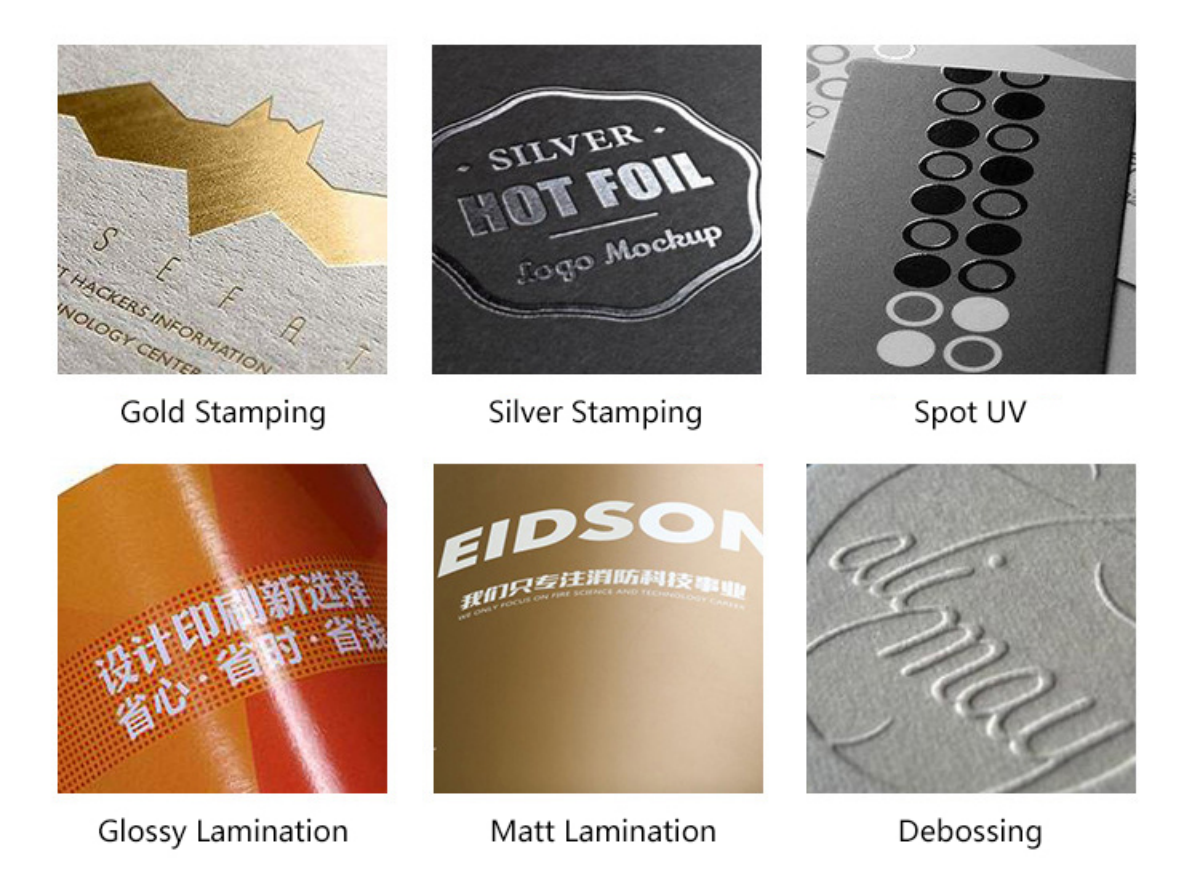
Paper Type
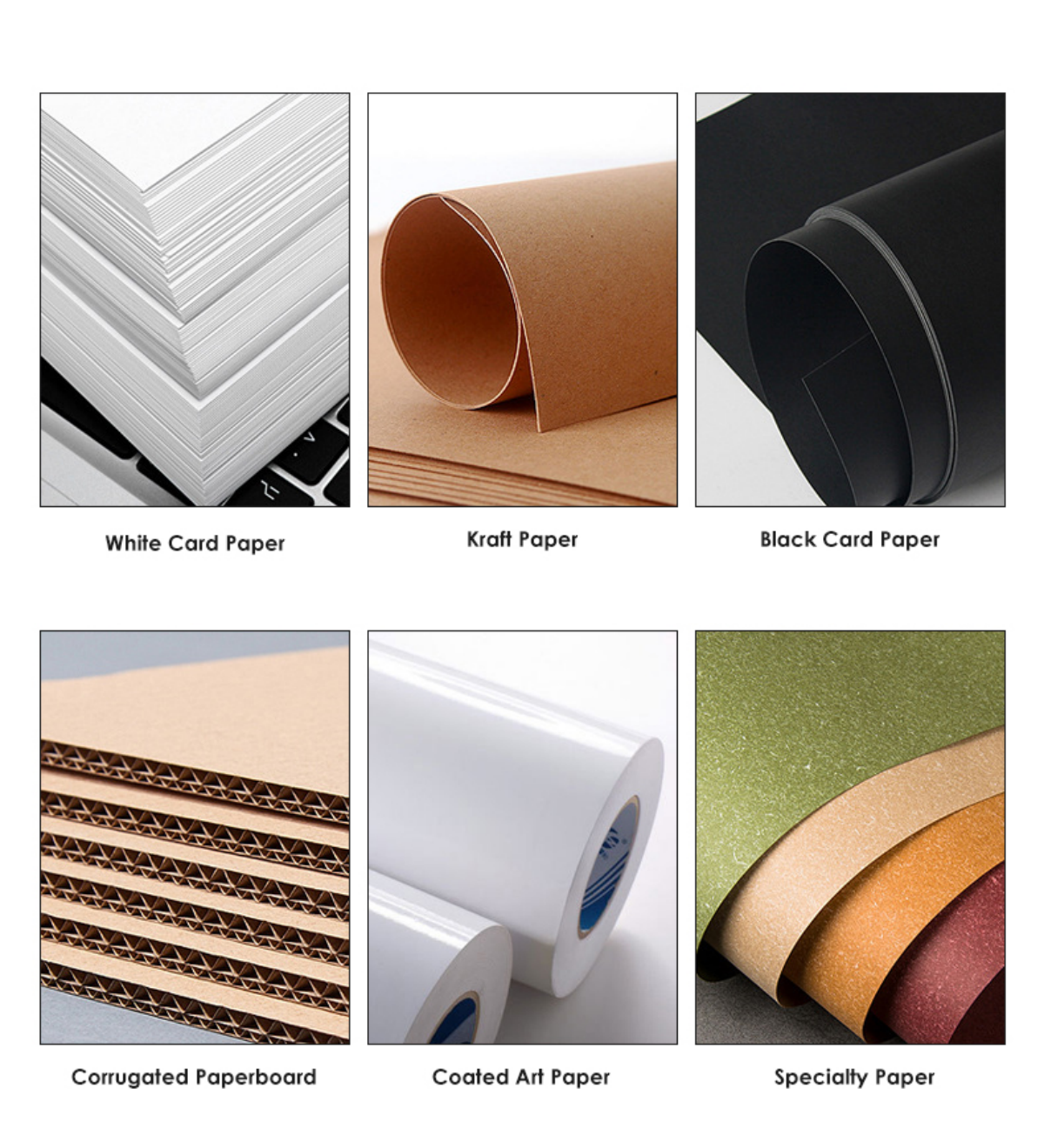
Customer Question & Answer
Please contact customer service for more information.
Your response of following questions will help us recommend the most suitable package.
Material Structure and Application
Paperboard is a thick paper-based material. While there is no rigid differentiation between paper and paperboard, paperboard is generally thicker (usually over 0.30 mm, 0.012 in, or 12 points) than paper and has certain superior attributes such as foldability and rigidity. According to ISO standards, paperboard is a paper with a grammage above 250 g/m2, but there are exceptions. Paperboard can be single- or multi-ply.
Paperboard can be easily cut and formed, is lightweight, and because it is strong, is used in packaging. Another end-use is high quality graphic printing, such as book and magazine covers or postcards.
Sometimes it is referred to as cardboard, which is a generic, lay term used to refer to any heavy paper pulp–based board, however this usage is deprecated in the paper, printing and packaging industries as it does not adequately describe each product type.
Terminology and classifications of paperboard are not always uniform. Differences occur depending on specific industry, locale, and personal choice. In general, the following are often used:
Boxboard or cartonboard: paperboard for folding cartons and rigid set-up boxes.
Folding boxboard (FBB): a bending grade capable of being scored and bending without fracture.
Kraft board: a strong virgin fiber board often used for beverage carriers. Often clay-coated for printing.
Solid bleached sulphate (SBS): clean white board used for foods etc. Sulphate refers to the kraft process.
Solid unbleached board (SUB): board made from unbleached chemical pulp.
Containerboard: a type of paperboard manufactured for the production of corrugated fiberboard.
Corrugated medium: the inner fluted portion of corrugated fiberboard.
Linerboard: a strong stiff board for one or both sides of corrugated boxes. It is the flat covering over the corrugating medium.
Other
Binder’s board: a paperboard used in bookbinding for making hardcovers.
Packaging applications
Box Type and Finish Surface
These box type are used for reference, it can be customized as well.
The surface treatment process of printed products generally refers to the post-processing process of printed products, in order to make the printed products more durable, convenient for transportation and storage, and look more high-end, atmospheric and high-grade. Printing surface treatment includes: lamination, spot UV, gold stamping, silver stamping, concave convex, embossing, hollow-carved, laser technology, etc.
Common Surface Treatment As Follows
Paper Type
White Card Paper
Both sides of the white card paper are white. The surface is smooth and flat, the texture is hard, thin and crisp, and can be used for double-sided printing. It has relatively uniform ink absorption and folding resistance.


